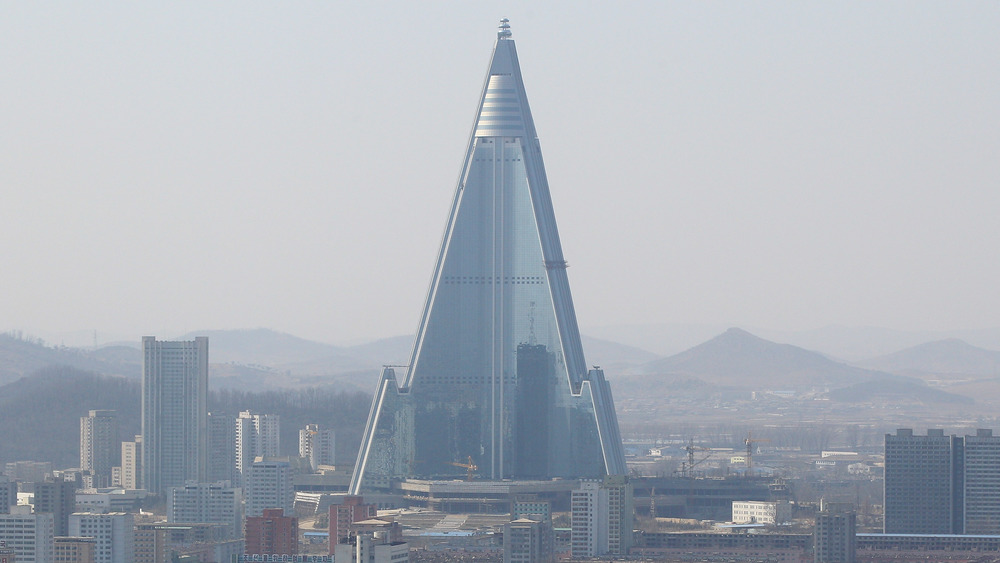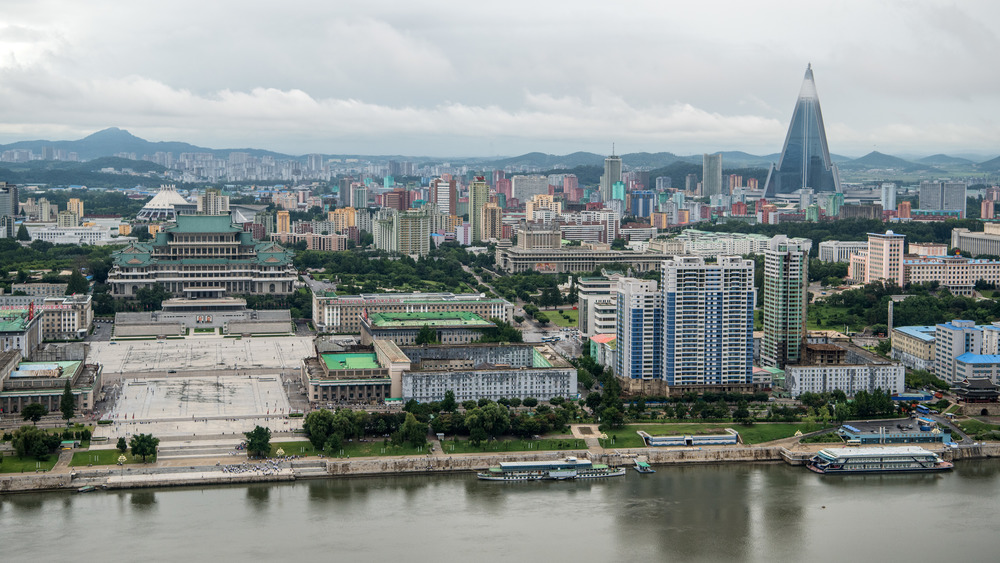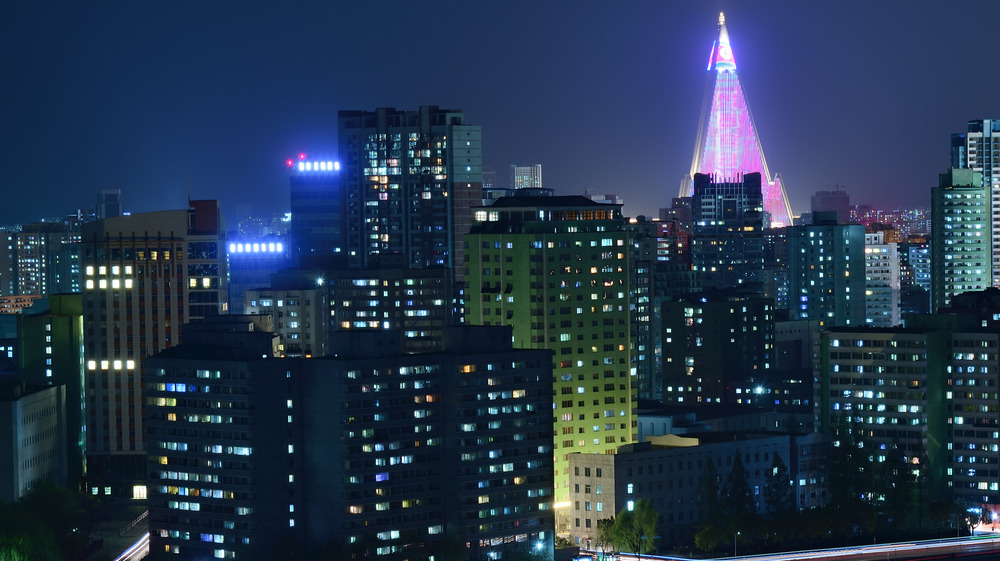The Hotel Of Doom's Design, Explained
In case you need another reason to not ever to go to North Korea (the Democratic People's Republic of Korea, or DPRK, one of the world's worst human rights abusers, duly chronicled by Amnesty International), it has a hotel of doom. Not a hotel of geniality, reprieve, or luminously radiant peace and love — not even a rank-and-file Hilton — but doom. Granted, this 300-meter-tall, menacing, imposing, serrated spearhead striking into the Pyongyang sky above the cityscape's drab concrete blocks wasn't dubbed the "Hotel of Doom" by its creators. Oh no. It just looks that way.
As the Cold War was coming to an end, and the DPRK's communist cousins in the Soviet Union were seeing their economy grind to a halt, leader Kim Il-Sung felt compelled to ensure that his country wouldn't become lost in the quagmire of global dominance, as Young Pioneer Tours overcheerfully explains. To the south, the Republic of Korea was rapidly evolving into the gem of modernity and culture that it is today. Singapore was doing much the same with Swissôtel The Stamford, then the world's tallest hotel at 226 meters, finished in 1986. So Kim Ii-Sung figured: hey, we can do taller. Hence the Ryugyong ("Willow Tree") Hotel, later nicknamed the "Hotel of Doom" by people with eyes.
Construction of the hotel began in 1987, contracted to Baekdu Mountain Architects & Engineers, per Atlas Obscura. It was "finished" in 1992. Or rather, its phase-one, missile tip-like (subtle symbol), concrete skeleton was finished. The interior was left untouched.
A hollow and unfinished structure for most of its life
NK News revealed some terrifyingly stark pictures of the Hotel of Doom's abandoned, all-concrete frame and interior in 2012, provided by the intrepid tour guides at the Koryo Group with permission from the North Korean government. In the decades since Ryugyong was first built, it's taken on near-mythical status as an enigma within an already enigmatic country, especially because the inside had remained unseen. Its hollow shell has also become an emblem of North Korea's failed state, and its intimidating presence the oppression its government exerts on its citizens.
After the demise of the USSR cut the DPRK's GDP by 40 percent, the hotel remained untouched until 2008, when Cairo-based engineering-and-construction group Orascom invested in the hotel (they also have a strong hand in the DPRK's telecommunications industry). In 2018 the current exterior was refurbished into a gleaming composite of LED screens that lends its current retro-futurist look, and also allows Ryugyong to double up as a night-lit propaganda beacon of flag imagery and slogan-filled shows, per CNN.
As it turns out, the 105-story structure only has one elevator, and it only goes up to the 99th floor. Simon Cockerell, manager at the aforementioned Koryo Group, who took the pictures of the interior, said, "It took a long time to get there, because it was a service elevator, not a modern lift with a string of buttons. There was a lift operator who determined where to stop."
A vision of wishful grandeur possibly nearing completion
The entire design of the Hotel of Doom is an example of reach exceeding grasp. Its intention is grandiose to the extreme, but its physical truth is filled with nothing. The interior spaces dwarf its inhabitants, meaning to convey the might of North Korea, but such grandeur is a façade exposed by unmet potential, much like the pixelated projections on its glassy hull. In certain cases, such as an image of a dining hall in the NK News article, where the ceilings appear to be tens of feet taller than a person (find the lady in the NK News picture if you can), it's easy to not only witness the design's hubris, but what could have been if only the nation had taken a different turn.
As it turns out, though, visitors might have a chance to behold such a vision, provided all goes according to the DPRK's apparent plan. In 2019 Stamford graduate Alek Sigley posted a picture on Twitter of the hotel's first sign above its main entrance, proclaiming "Ryugyong Hotel" under a logo that looks like the Klingon Empire's from Star Trek. Construction around the base has been finished, and people can walk up to the front door, but not yet enter. It's supposed to house "premier restaurants, hotel accommodation, apartments, and business facilities." Within a few more years, it just might be done.
Until recently, the entire building, as Esquire reports, had been airbrushed out of state-sanctioned pictures of Pyongyang.


